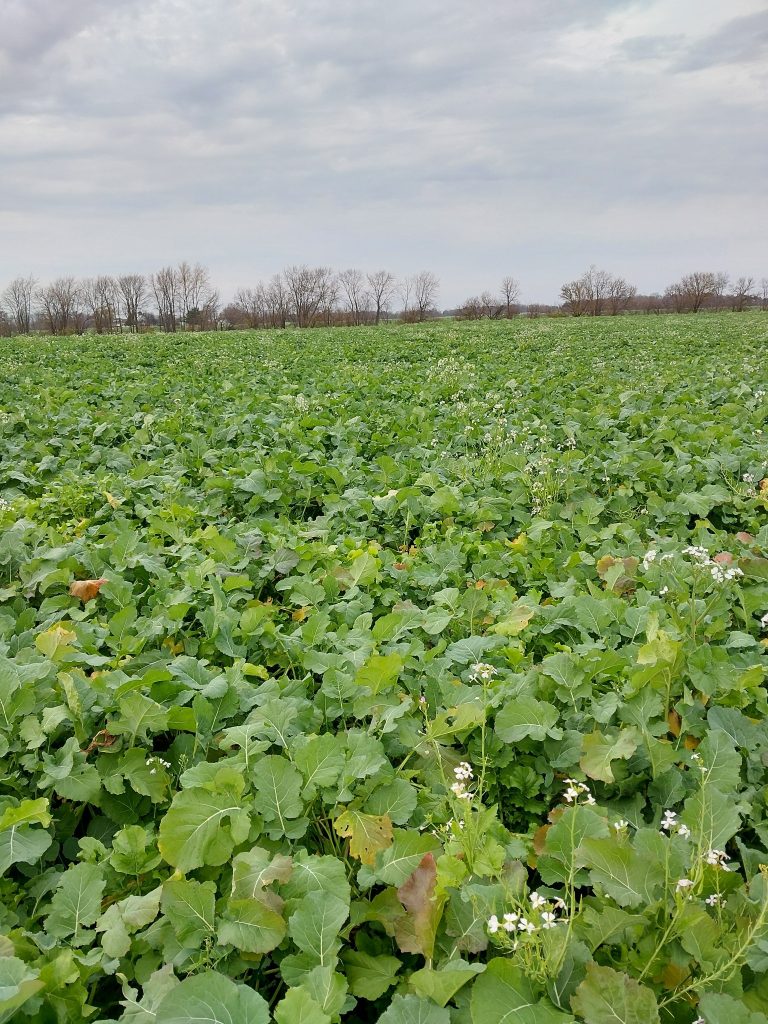I’m often asked what my favorite cover crop is after wheat and why.
That’s a hard question because there is sufficient growing season after wheat to grow just about anything in the book!
Planting cover crops after wheat is a big opportunity to improve the soil, protect it from erosion, grow organic matter and natural N, break disease and pest cycles, and prevent weed growth. With that said, here are my top 20 or so go-to favorites by application.
Warm Season Forbs
Buckwheat and sunflowers are great additions to our more common mixes when we are planting in summer. Both can take the heat and germinate quickly to provide cover for farmers who like to plant quickly after wheat harvest.
Buckwheat helps suppress summer annual weeds with near-instant cover and is known for cycling nutrients from deep in the soil.
Sunflowers are an excellent soil improver with a shallow root system. Sunflowers encourage beneficial fungi in the soil and can aggregate topsoil like no other.
Both buckwheat and sunflowers are pollinator-friendly and beautiful to grow. Both are good choices for those nervous about growing too much biomass – residue from these crops are no match for a disk blade or no-till colter.
Warm Season Grasses
Large amounts of biomass can be grown with pearl millet, sorghum-sudan, or grain sorghum. These can be used to improve organic matter in the soil or smother out weeds when planted at higher rates. At low rates, these are interesting additions for diversity. It should also be noted that these cover crops generally do not act as hosts for leaf diseases we worry about in corn. Cereals we use as cover crops often are leaf disease hosts. None of these will overwinter.
Warm Season Legumes
Sunn hemp is a warm-season legume that “has it all” for summer planting. It’s heat tolerant, adds diversity, can fix a bunch of N, and blooms indeterminately for pollinators all season long.
Cowpeas are actually beans. They do well in a summer planting because of heat and drought tolerance and can fix N with very tender forage that breaks down easily.
If fixing N is the primary goal, be sure to inoculate the seed because of how infrequently these crops are grown in our soils.
Cool Season Brassicas
Radishes, turnips, and kale are tough enough to get started in the summer and will grow vigorously in early fall. Their taproots naturally break up soil compaction and their tender forage quickly breaks down to feed soil organisms.
Radishes – pair these with larger seeded mixes, where big tubers are wanted, or winterkill is desired. Daikon tubers can get truly massive.
Turnips – pair these with smaller seeded mixes, where big tubers are not wanted, or where winter survival is wanted. Choose a forage variety like Jackpot or Appin for the smallest tubers.
Bayou Kale – a neat product with even smaller tubers and lots of leaf.
Cool Season Grasses
Annual ryegrass benefits from an early start and can handle the heat. Very deep root system. Can be hard to kill with herbicide, so be sure to check on your customer’s comfort level before adding it to a mix.
Black oats benefit from an early start and will keep growing long after spring oats terminate. Lots of biomass and won’t go to seed in the fall like summer planted spring oats. Should winterkill in January.
Barley is best planted a few weeks after wheat harvest to avoid July heat, but it really benefits from being planted earlier than after soybeans. This cereal overwinters but does not produce an intimidating amount of biomass. It’s easy to kill and is better ahead of corn than rye or triticale.
Cool Season Legumes
Crimson clover – possibly the best clover for summer planting. If crimson gets a good early start, like after wheat, it successfully overwinters and vigorously fixes N in the spring.

Hairy vetch – I love this stuff and it works great after wheat. Rather than gushing on about why, I should remind you that it has some haters. It’s a strong perennial that can have hard seed and also re-seed itself in settings where it grows unharvested from the following spring to late June. This is worth a discussion point if the following crop would happen to be a small grain like oats or a spring-planted hay field. Check on these with your customer and then strongly consider planting some vetch!
I realize this has turned into a long list of “favorites.”
Please don’t get intimidated by the number of choices and remember that a great cover crop mix can be made by selecting just one member from 3 or 4 of the families above.
With so many potential cover crop benefits AND the opportunity to use most of these for forage too, cover cropping after wheat is a slam dunk!
Double-crop soybeans can be an expensive gamble by comparison.
Article posted by Dustin Johnson.
Questions? Don’t hesitate to get in touch with us.




